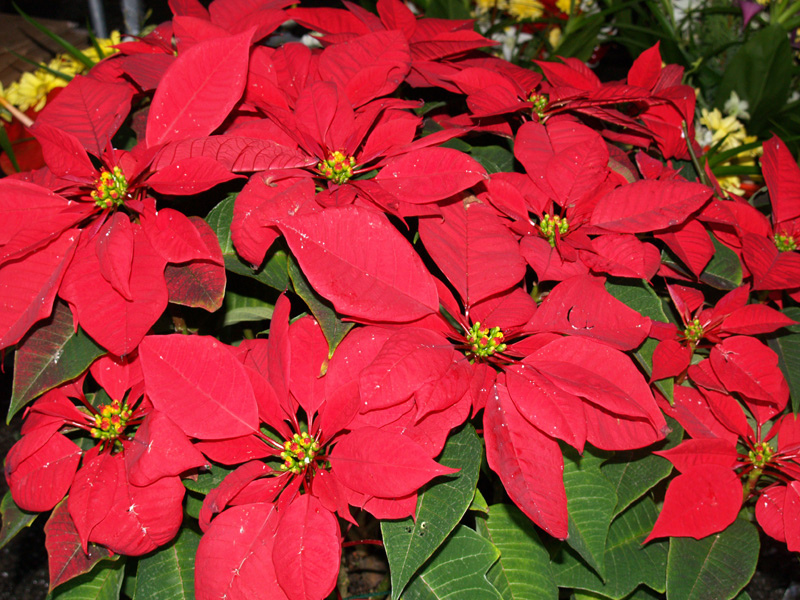The poinsettia (/p??n's?ti?/ or /p??n's?t?/) (Euphorbia pulcherrima) is a commercially important vegetable kinds of the diverse spurge family. The species is indigenous to Mexico. It is particularly well known for its renewable and red foliage which is trusted in Holiday floral exhibits. It derives its common English name from Joel Roberts Poinsett,[3] the first USA Minister to Mexico,[4] who introduced the plant to the US in 1825.
Euphorbia pulcherrima is a shrub or small tree, attaining a level of 0 typically.6-4 metres (2 ft 0 in-13 ft 1 in). The flower bears dark green dentate leaves that measure 7-16 centimetres (2.8-6.3 in) long. The coloured bracts--which are most flaming red but can be orange often, pale green, cream, green, white, or marbled--are often mistaken for blossom petals for their groupings and colors, but are actually leaves.[citation needed] The colors of the bracts are created through photoperiodism, meaning that they require darkness (12 hours at a time for at least five days in a row) to change color. At the same time, the plants require considerable light through the full day for the brightest color. The flowers of the poinsettia are unassuming , nor attract pollinators. They are grouped within small yellowish structures found in the center of every leaf bunch, and are called cyathia. The poinsettia is native to Mexico. It really is within the outdoors in deciduous tropical forests at moderate elevations from southern Sinaloa down the whole Pacific coast of Mexico to Chiapas and Guatemala. Additionally it is found in the interior in the hot, seasonally dry out forests of Guerrero, Oaxaca, and Chiapas. Records of E. pulcherrima growing in the wild in Nicaragua and Costa Rica have yet to be established by botanists. You will find over 100 cultivated varieties of poinsettia.
The Aztecs used the plant to produce red dye and as an antipyretic medication. In Nahuatl, the language of the Aztecs, the plant is called Cuitlaxochitl, meaning "flower that grows in residues or soil" Today it is known in Mexico and Guatemala as Flor de Noche Buena, meaning Christmas Eve Flower. In Spain it is known as Flor de Pascua or Pascua, meaning Easter flower. In Peru and Chile, the seed became known as Crown of the Andes. In Turkey, it is called Atat?rk's rose because Atat?rk, the creator of the Republic, liked this rose and made a substantial contribution to its cultivation in Turkey.[citation needed] In Hungarian, it is named Santa Claus' Rose, and it's widely used as a Xmas decoration.
The plant's connection with Christmas commenced in 16th-century Mexico, where legend tells of a woman, called Pepita or Maria commonly, who was too poor to provide a present for the party of Jesus' birthday and was inspired by an angel to assemble weeds from the roadside and place them before the church altar. Crimson blossoms sprouted from the weeds and became beautiful poinsettias. From the 17th century, Franciscan friars in Mexico included the plants in their Christmas celebrations. The star-shaped leaf routine is said to symbolize the Celebrity of Bethlehem, and the red colorization represents the blood vessels sacrifice through the crucifixion of Jesus. Poinsettias are popular Holiday accessories in homes, churches, office buildings, and anywhere else across North America. They can be purchased in large numbers from grocery, drug, and hardware stores. In america, December 12 is Country wide Poinsettia Day.
Are Poinsettias Poisonous? Here39;s What You Need To Know The
Fact or Fiction: Are Poinsettias Poisonous? Tennessee Home and Farm
Poinsettia plants produce an irritating liquid that can burn an animal


Tidak ada komentar:
Posting Komentar